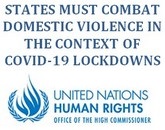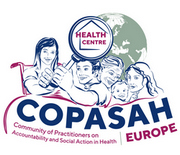
Elderly woman counts money, China. Credit: Curt Carnemark / World Bank
SUMMARY
- World Bank’s financial inclusion programme celebrates latest banking data, papering over issues of over-indebtedness and moral hazard as banks post record profits
- Cost of living crisis, financialisation and austerity create perfect storm as women sink deeper into debt trap to sustain their households and livelihoods
5 April 2023 - The World Bank released its latest Global Findex data on financial inclusion last year, celebrating a worldwide rise in account ownership from 51 to 76 per cent since 2011, fuelled by digitisation, mobile money and increasing female banking rates. However, research by Third World Network and Universidade Federal do Rio de Janeiro professor Lena Lavinas on Ecuador, Pakistan, Brazil and South Africa points to another concerning trend: Growing household over-indebtedness, much of which is shouldered by women. In Ecuador, massive cuts to the public health care system as a result of World Bank and IMF loan conditions led to women taking on growing debt to cover healthcare and household expenses (see Observer Summer 2020; Briefing, Learning lessons from the Covid-19 pandemic: The World Bank’s macroeconomic policies and women’s rights).
In Brazil, financial inclusion of the poor coupled with widespread financialisation and constitutionally-enshrined austerity mean that over half the adult population is now indebted and a third of household income is used to service debt alone, most of which is consumer credit (see Dispatch Annuals 2022; Observer Spring 2018). As a result, state-sponsored social stipends disbursed to cushion Covid-19 impacts were used to pay off overdue household debt, further entrenching structural indebtedness and leading to a scenario where public social transfers become collateral to guarantee and finance private sector loans.
These dynamics show that rather than facilitating women’s economic empowerment, in the context of social spending cuts and privatisation of public services, ‘financial inclusion’ of the poor may in fact lead to new gendered layers of deprivation and dependence (see Observer Winter 2017).
Consumer protection is not enough to counter financialisation impacts
The World Bank tackles these issues mainly from the perspective of consumer protection, suggesting better financial literacy education and consumer safeguards – although what incentives banks and microfinance institutions have for moving away from their profit-driven model, which the Bank itself has helped promote, remains unclear. The Bank’s assertion that when financial inclusion doesn’t yield the desired effects, it is because “the financial sector doesn’t always work correctly” (see Dispatch Annuals 2022), conveniently overlooks the fact that information asymmetry, rent seeking and moral hazard are common features of the financial sector almost everywhere. “The development banks promoted this personal profit-making version” asserted microfinance pioneer Muhammad Yunus in a 2022 Bloomberg report, which calculated that since 2011, the International Finance Corporation (IFC) – the Bank’s private sector arm – invested $5.3 billion in microfinance institutions, including in Cambodia, where lenders seized over-indebted borrowers’ lands while posting record profits during the pandemic years. Other examples abound in the same article, from debtors’ prisons in Jordan to suicides in Sri Lanka. Kenyan mobile money provider M-Pesa, once championed as an anti-poverty solution, has since been discredited for predatory lending and consumer data exploitation, causing even CGAP, the Bank-affiliated financial inclusion think tank, to call for caution.
"Taxpayer-funded development banks, which could fix the problem, are instead channeling hundreds of millions of dollars earmarked for poverty alleviation into some of the most predatory lenders."GAVIN FINCH AND DAVID KOCIENIEWSKI, BLOOMBERG
Yet, the Bank still fails to systematically make the connection between its own Findex findings that two-thirds of adults in developing countries face significant financial worries to meet their basic needs, the rapid growth of accessible financial products, commercial banks’ primary profit motive, and growing consumer over-indebtedness. Findex authors admitted that “while access to finance is growing globally, financial health and well-being are stagnating or even declining.” Academic research has also shown that the evidence for financial inclusion facilitating broader development outcomes, poverty alleviation and “good business” is far from convincing.
Unfortunately, the expected appointment of former MasterCard CEO and financial inclusion champion Ajay Banga as World Bank president will likely mean doubling down on this agenda (see Observer Spring 2023). But without a critical investigation of these dynamics, the Bank runs the risk of continuing to champion development “solutions” that ultimately fail, and trap the poor in cycles of debt without meaningful productivity gains, let alone empowerment.
Source: WUNRN – 11.07.2023






























